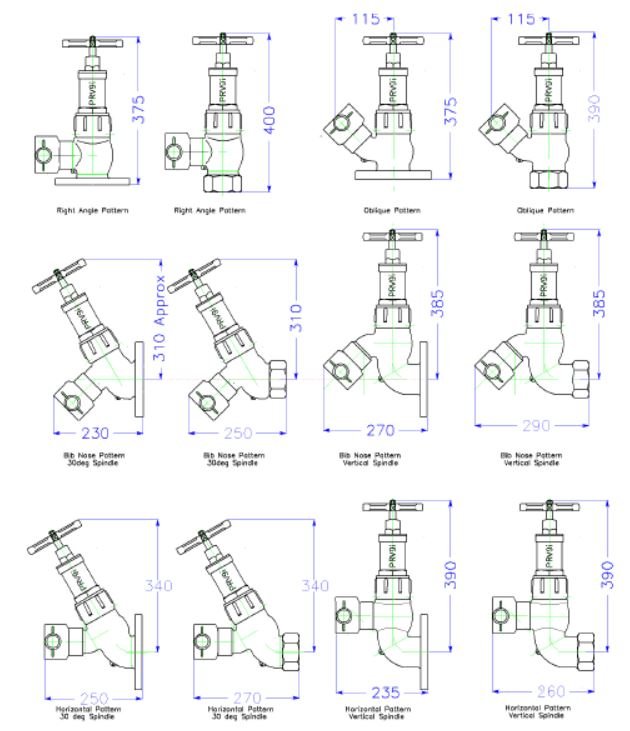
Q: What’s an efficient way to account for everyone in the event of an on-site emergency?
A: The only real answer to this question is the one that exactly fits your company and all your possible emergency situations. No one answer will apply across the board, but there are several factors for your emergency specialists or evacuation captains to consider.
First, there are many different types of on-site emergencies. We often think of the most common – a fire or hazardous substance spill or leak that requires everyone to leave the building and assemble at a pre-arranged muster point. But there are others. Structural failures such as building collapses or earthquakes may prevent people from exiting to a muster point. Also, active shooter or terrorist scenarios may require a shelter-in-place option in which moving is not an option.
(Learn more in how to keep your team safe during and emergency muster point.)
Then there’s the physical space. Some companies have many buildings with large distances or barriers between them that make travel by foot to an evacuation point a time-consuming task.
People, too, represent a major variable. There are many ways of confirming a person’s physical presence on-site, most commonly a security card or scanning system designed for regular security admittance procedures. Human error comes into play here, as some people may have forgotten their card at home when they came to work, or others may not be at work on the day of the emergency but have forgotten their card on-site. Lower-tech tools such as a dry-erase board or magnet board with “In” and “Out” status for each employee can be useful in situations with a small staff, but this still relies on human memory to make the change.
Finally, there’s the panic scenario. In a situation of panic and of a hurried emergency evacuation, it is unlikely that every staff member will remember to bring their phone or pass card with them, and even evacuation captains and trained staff may forget their own special headcount scanner or roll-call list in moments of confusion and fear. It only takes one unaccounted-for individual to compel emergency crews to conduct an extensive and possibly dangerous search.
What Technologies and Tools Are Available?
A range of technologies exists to help with headcount processes. Despite the challenges listed above, tools both high and low tech are a good idea to have on hand. These include:
- Software that can be set up on an uninterruptible power supply (UPS) that generates a roll-call printout when the fire alarm is pulled. This requires a computer and UPS-compatible printer ideally housed in a separate, weatherproof building.
- External badge scanners located at muster points that allow employees to re-login at the safety zone.
- Identity badges that incorporate passive RFID that can be read automatically by scanners nearby, or badges that incorporate active (battery-powered) RFID that can be read from much further away, and possibly through damaged buildings.
- An up-to-date list of employee phone numbers, secondary numbers, and emergency contacts, as well as that of any visitor to the site who has signed in. This can be transferred from a front reception desk if in paper form but would be better if reception entered visitors into a cloud-based visitor log.
- Cloud-based apps that track employees’ locations and send urgent text messages to each employee requiring a status confirmation (indicating that the employee is “Safe” or providing an emergency message like “Stuck in a lift”). Some of these apps work even when cellular communication is unavailable.
Technologies, both high and low tech, are not the sole solution. There must be a process for sorting out the disorder at a muster point. It can be very difficult to call out a roll-call inside a random group of people, many of whom will be talking or otherwise distracted by the stress of the event. Efficient evacuation attendance requires that people stand in formation, ideally by office or team so that a physical count and a recount can take place.
So, What Is the Most Efficient Way?
The most efficient method of accounting for people in an emergency is actual physical drills. This is why emergency services conduct physical mock-ups of disaster scenarios. A physical drill, ideally done without warning, gives employees and emergency coordinators direct experience into what works and what does not work. Opinions differ as to whether drills should be announced in advance or not. The danger of expecting a drill is that people will not behave the same way as they would when genuinely frightened. But it is also prudent to try to avoid real situations of cardiac crisis or injury brought on by the fear of an unannounced drill.
(Learn more about Emergency planning and community right to know act (EPCRA).)
Emergency coordinators agree that performing a physical drill is still more valuable than not performing one. Much can be learned and improved by experiencing the unexpected challenges of a large-scale emergency.
In addition to regular drilling, a heightened state of emergency preparedness is now vital. With regard to accounting for people, this means ensuring that whatever attendance technology is used, from paper to dry-erase boards through to badges and apps, that the minute-by-minute changes in onsite attendance are logged, duplicated and made available to the evacuation captains and others who need to know. This basically should be no less intrusive or bothersome than is the practice of computer security hygiene, such as the habit of regularly changing passwords and the routine use of internal phishing tests.
Active shooter scenarios are quickly making their mark as a significant threat to employee safety, potentially eclipsing more “traditional” problems like explosions, fires, or gas leaks. As such, the need for heightened preparedness, education, and tools is not only greater than ever, it is also essential in conforming to occupational health and safety statutes. It’s part of life in this age.
Other Recent Questions
- Free Download Common Firefighter Job Interview Questions and Answers
- High Rise Fire Safety Questions and Answers
- Scaffold Safety self Audit and checklist
- HSE Interview Questions and Answers for Oil and Gas
- Q& A: Which is better Cast Iron or concrete counterweight in the tower crane? and What is the purpose of a counterweight?
- Top 154 Safety Interview Questions and Answers for successful
- Online Quiz: Top 13 Industrial Safety Objectives Questions
- Q&A: What Does Fire Load Mean? and How do you calculate it?
- HSE Interview Questioners
- Q & A: Do Manual Hoists and Trolleys Require a Load Test after Installation?
- Safety Record keeping
- Is Magnetic Particle Testing required by an OSHA or ASME standard?
- What is the difference between fall protection and fall prevention
- Conventional or Addressable Fire Alarm System?
- Online Quiz: Personal Protective Equipment (PPE)
- 68 HSE Interview Questions
- Online Quiz: Work and home fire safety
- Q & A: What is the Difference between Process shutdown and Emergency Shutdown?
- Interview Questions on Fire Alarm System
- Online Quiz: lightning Safety
- Q & A: What happens if I tie off at the foot level with a personal SRL?
- E-Books: Book of Questions and Answers Safety Health
- Q & A: What kind of gloves are best for stick welding?
- Q & A: Does anyone other than equipment operators need to be trained in lockout/Tagout?
- Work-Related Stress short guide
- How many wheel chocks do should I use per trailer?
- How is wind chill calculated?
- How do cooling towels work?
- What’s an efficient way to account for everyone in the event of an on-site emergency?
- Who should be responsible for rescuing fallen workers?
- When should workers use polarized safety glasses?
- Q & A: What PPE should I use when working at home?
- Q & A: What are the Types of scaffold’s load?
- Coronavirus disease (COVID-19) Questions & Answers
- What procedure should we follow to reactivate equipment that has been locked out?
- What are some of the guidelines around using back support belts in the workplace?
- What is the difference between a hazard and a risk?
- Are nitrile gloves safe?
- Bump Testing Gas Detector 6 Important Questions
- Online Quiz:The Lab Safety Symbols
- Can you wear any pair of earmuffs with a hard hat?
- Online Quiz:Health and Safety Signs
- Online Quiz:Personal Protective Equipment (PPE)
- Online Quiz:Construction Safety -Excavation
- What is Meaning of %LEL , %UEL , PID
- Online Quiz:Ladder safety, Test your self
- Online Quiz:Electrical safety, Test your self
- Fall Protection Systems Quiz Test Your Knowledge
- What is the general safety Rules and apply to whom?
- What can we do about rain protection for arc flash work?
- What is a self-retracting fall protection device?
- What is the difference between primary and secondary spill containment?
- How does dehydration impact workplace safety?
- What is the difference between safety goggles and glasses?
- Safety interview Questions and Answers Part 2
- Safety interview Questions and Answers Part 1



